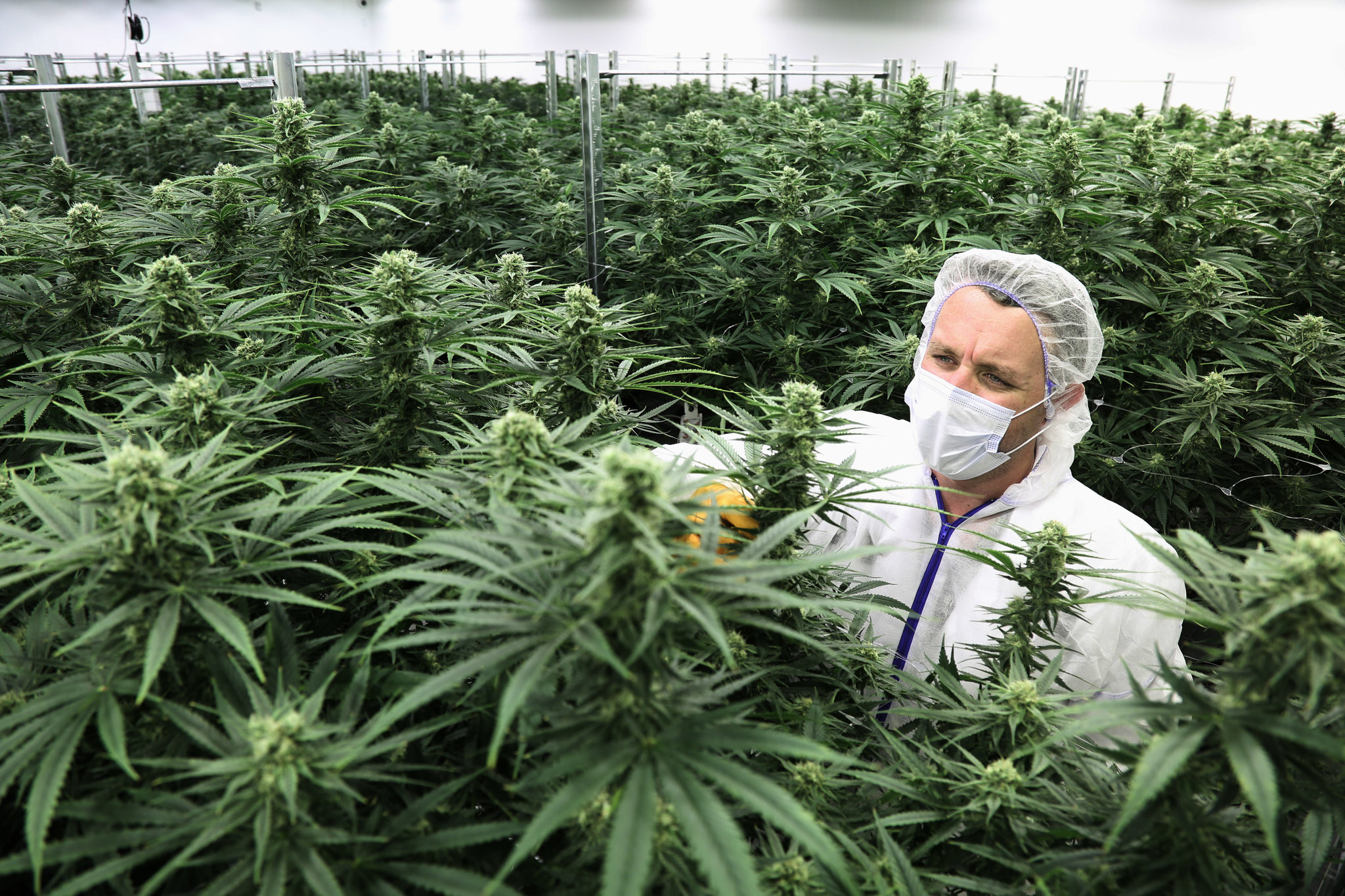The number of times this question is asked daily has grown remarkably since the passage of the Farm Bill that allowed Industrial Hemp to become a mainstay in American Agriculture once again. The use of CBGa, specifically as we’ll discuss here as an inhaled plant constituent, is definitely something newer. It’s a minor cannabinoid that I’ve already written about doing major things – in all reality, this is the first cannabinoid any cannabis plant makes, and therefore the Global Cannabinoid Research Center considers it a ‘major’.
Mark Dryer, a patient who just used some for the first time, reached out to share his experience and ask a few questions. “I tried it for the first time and it mellowed me out like some type of sedative at first, then I used it again and it gave me a boost of energy. Why does this happen? Mike, do you know why do I feel so good?”
He shared that his wife just told him the tax return was large enough to catch up on the mortgage – that could be what has him feeling joy – but there’s much more to it as this feeling was ‘new’ to him in his description and hit him as he inhaled.
Let’s break this down easily and without a truckload of difficult-to-read scientific jargon and research papers. With the prohibition of cannabis and the cessation of use almost globally by most of the population, a deficiency occurred without our Endocannabinoid System (ECS) – by shutting the door on what was once a pharmacy filled with hemp it caused our bodies to crave what multiple cannabinoids did although those old bottles were only labeled as Cannabis with THC.
When we examine 1800’s era bottling of these products the THC levels are always low – 2% seems to be the mark the same pharma companies of today would hit well over 100 years ago making tinctures. What was in the balance of those – well since there were none of the 1940s and beyond discoveries and no analytical labs we don’t need to assume that THC was the only cannabinoid considered.
Since it came from hemp the assumption that people used minor cannabinoids in full force long ago is more like an accurate theory than a guess. Tall stalky hemp plants produced that THC in low levels as well as a plethora of other constituents – and today’s hemp is doing the exact same thing. Farmers and extractors have to ‘remediate’ it to remove the THC that’s higher than the legal limit.
This is an easy one folks – there’s no way possible that people were only using Cannabis high in THC throughout those years. So, when prohibition hit in 1937 and when the pharmacies removed all cannabis products less than 5 years later – the problems began for just about everyone. Certain cannabinoids like THC have direct action in the system and act like endocannabinoids – other cannabinoids like CBGa cause a whole different physiological response. Almost all cannabiniods have been discovered in the past 80 years – just about everything other than THC.
When we inhale CBGa in crumble, whether it’s mixed into THC flower or used on its own, our body starts creating those much-needed endocannabinoids our bodies are deficient in. When the production of these essential signaling elements our body makes is on the rise – so is cannabinoid receptor production. Many that use cannabis know about their ECS but have ingested various degrees of information about it – some accurate and some are less than that.
One issue many have in trying to maintain their wellness is that THC’s efficacy fluctuates. Whether it’s inhaled or used orally – many find that they need more and more and gain less effective treatment as that dose goes up. The reason why is not tolerance as so many articles and online discussions suggest – it’s all about balance. The more THC we use the less our body makes of the endorphin that looks like it – and that slows the production of new receptors.
When a receptor system becomes inundated with the natural substances there’s only one response the body makes – and that’s more receptors for them to land on. Decades upon decades of prohibition caused people to no longer ingest the minor cannabinoids other than THC – and for many a complete cessation occurred within their bloodlines for numerous generations.
This has caused what’s known as Clinical Endocannabinoid Deficiency Syndrome. There are several research articles on this if you want to go search for emerging science. This is a scenario in which our body doesn’t make the endocannabinoid Anandamide and others – and that’s why we respond so well to THC – as it’s looks and acts much like the endorphin.
The only problem is the more THC we consume the less our system feels the need to produce endorphins, and when that occurs we don’t gain those necessary new receptors. It’s a harsh catch 22 as so many of us must continue our use of THC on our wellness journeys and in battles against health issues.
This consumer, Mark, had an interesting experience that’s directly related to what we refer to as ‘ECS Balance’. In one instance he used CBGa crumble and it made him relaxed, so much that he referred to it as sedation. In another, he reports it gave him an energy boost – when I interviewed him on the dose-response much more information made the answer to his question much easier for me as a consultant. When he smoked it out of a pipe he reported the euphoric sense of ‘relief’ – but this was after he smoked quite a bit of Cannabis.

When the ‘lifted feeling’ or the boost of energy hit him it was in the morning – he used the CBGa inhaled in a dab instead of THC. This tells someone like me that his use caused an Anandamide rush – and those endocannabinoids started flowing through the system landing on receptors instead of THC. Truly, the ECS was built for endocannabinoids and is pleased by this action, almost all who use this cannabinoid in that manner report a high level of clarity in thought and a much broader ability to function in many aspects of life both physically and mentally.
Patients like Mark that use only THC inhaled and no other methods of cannabinoid intake will become imbalanced in the system. Use increases and away we go with what appears to be a ‘habit’ that’s increasing but in reality, this is nothing more than a system that wants some ebb and flow and not just one type of activity. Some become so frustrated at the amount of THC they use that they’ll reach out to talk about it like Mark did and try something new.
“I can’t completely quit using THC ever – it’s what keeps me normal” Mark explained. “Without continually smoking or dabbing I’m just not me, I get very moody and can snap. Being around my wife and kids like that isn’t okay with me so I find work to do outside and that makes my mind feel better, it’s almost like the CBGa.”
His statement is so on point, the exercise he does outside causes the body to produce the endocannabinoid we’ve discussed, Anandamide. When we sweat our ECS goes to work but not quite as intense as it does with the use of minor cannabinoids that work in extremely major ways like CBGa.
Various online articles suggest ‘Tolerance Breaks’ to help people gain better efficacy. This ideology is much like starvation to make one eat less for a few days – it robs a person of nutrition when that’s done and quickly they’re back to eating the same. Tolerance Breaks, or the cessation of use of THC for a few days, do the exact same thing but to the ECS. It doesn’t take a rocket scientist to figure out a system that’s deficient definitely doesn’t need starvation – it needs balance.
That’s where the CBGa comes in – especially for those who smoke and dab THC products. Various minor cannabinoids cause endocannabinoid production but CBGa leads the way. It’s the strongest, by far, and the most mellow causing an effect upon the user that’s extremely pleasant while doing its beautiful job within. Many patients have started ingesting it as they find it’s even stronger in that delivery.
Many find that smoking CBGa crumble from a pipe gives them the feeling they’re looking for while others put it into a joint or onto a bong load. A whole separate crowd dabs it just like THC and even mixes it into joints. And the others prefer ingestion which has its own merits, unlike Inhalation which has been proven to produce a whopping 60% absorption rate while ingestion looms at 10% or lower with nonsoluble cannabinoids.
I’ve always loved CBGa crumble – even before I knew why I needed it. I hope you gain some insight from this article and find ways to enhance your ECS actions through the use of other plant elements. Everything we do in life from work to play requires that crucial balancing act – and the use of cannabinoid medicine is no different.
Thank you for reading – please make contact today, I look forward to helping you out. –Mike Robinson, Founder – Global Cannabinoid Research Center but most of all, Genevieve’s Daddy. Read about our family in the Cannabis Love Story today.


